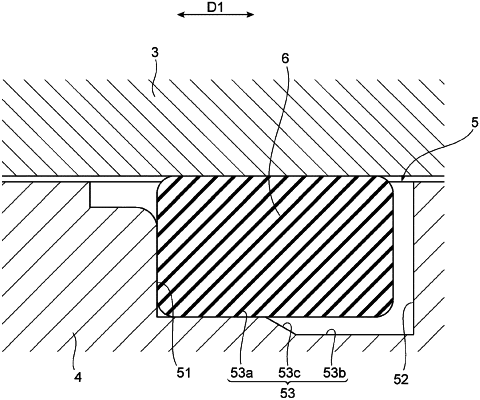| CPC F16D 55/226 (2013.01) [F16D 65/18 (2013.01); F16J 9/00 (2013.01); F16D 2125/06 (2013.01); F16D 2125/08 (2013.01); F16D 2125/40 (2013.01)] | 4 Claims |

|
1. A disk brake comprising:
a brake rotor;
a brake pad configured to face the brake rotor;
a piston configured to move the brake pad;
a cylinder configured to house the piston movably in an axial direction;
a seal groove provided in a circumferential direction on an inner circumferential surface of the cylinder; and
a piston seal arranged in the seal groove, the piston seal configured to liquid-tightly seal a space between an outer circumferential surface of the piston and an inner circumferential surface of the cylinder,
wherein the seal groove includes: a front wall, a rear wall farther from the brake rotor than the front wall in the axial direction, and a bottom wall extending along the axial direction between the rear wall and the front wall,
wherein the bottom wall includes a front bottom wall adjacent to the front wall, a rear bottom wall adjacent to the rear wall, and an inclined surface between and contacting the front bottom wall and the rear bottom wall, the front bottom wall and the rear bottom wall being parallel to each other and without inclination, and
wherein the rear bottom wall has a depth from the inner circumferential surface, the depth being larger than a dimension of the piston seal in an uncompressed state in a direction of the depth and being larger than a depth from the inner circumferential surface of the front bottom wall.
|